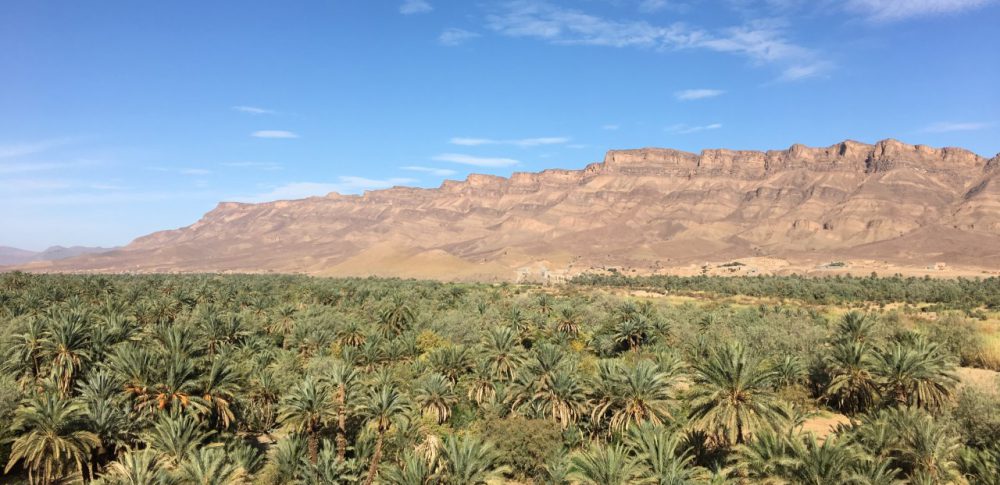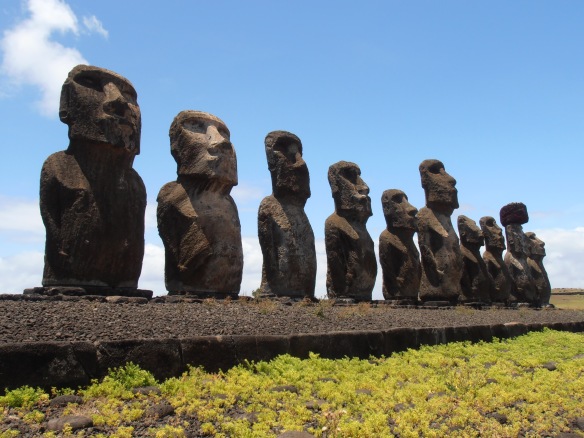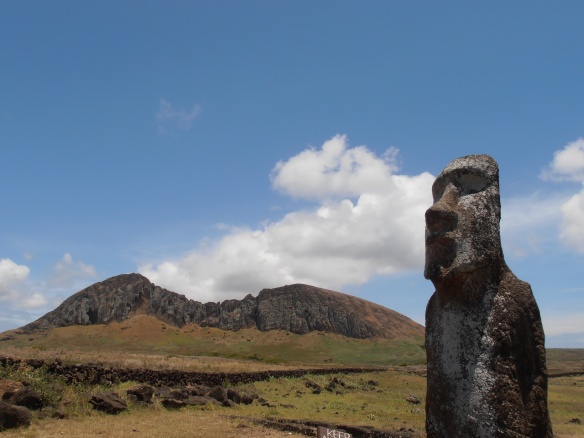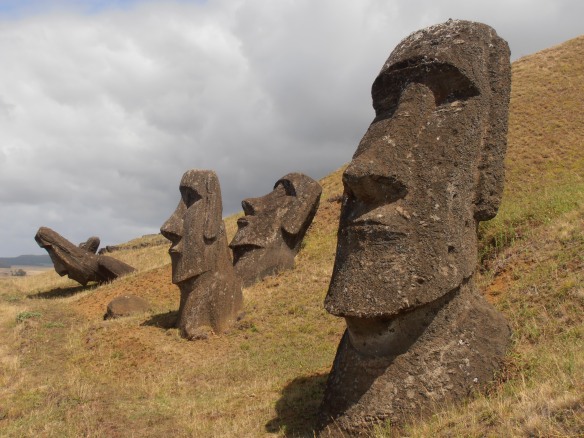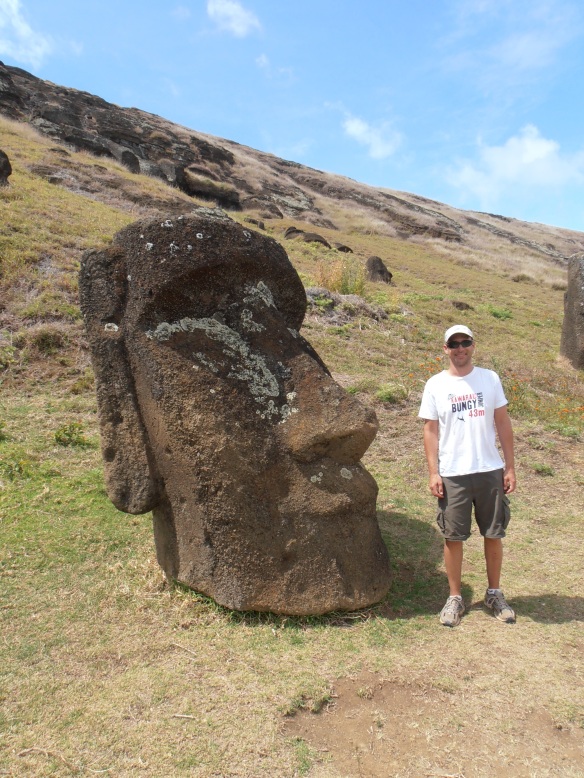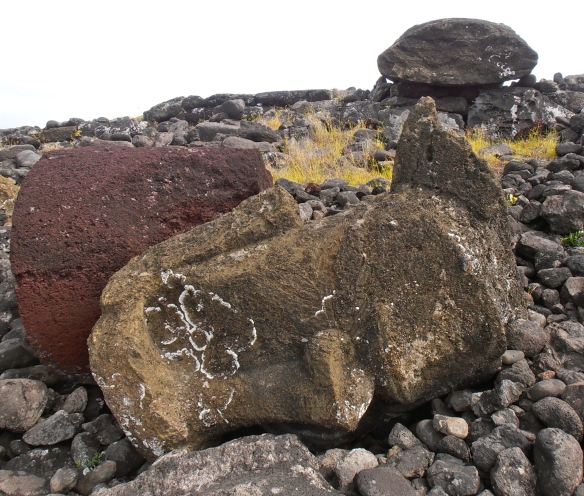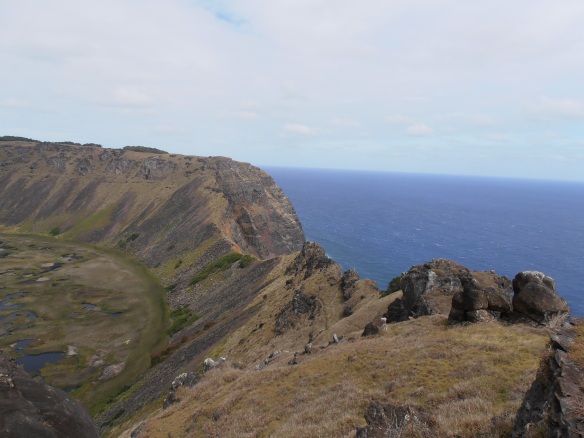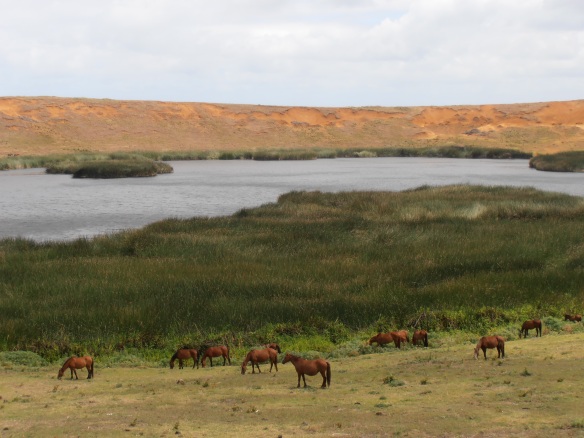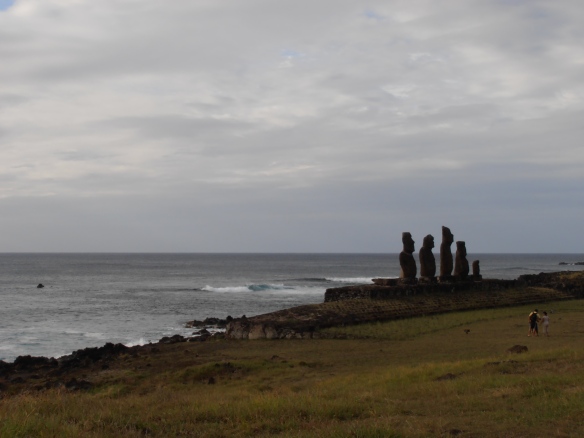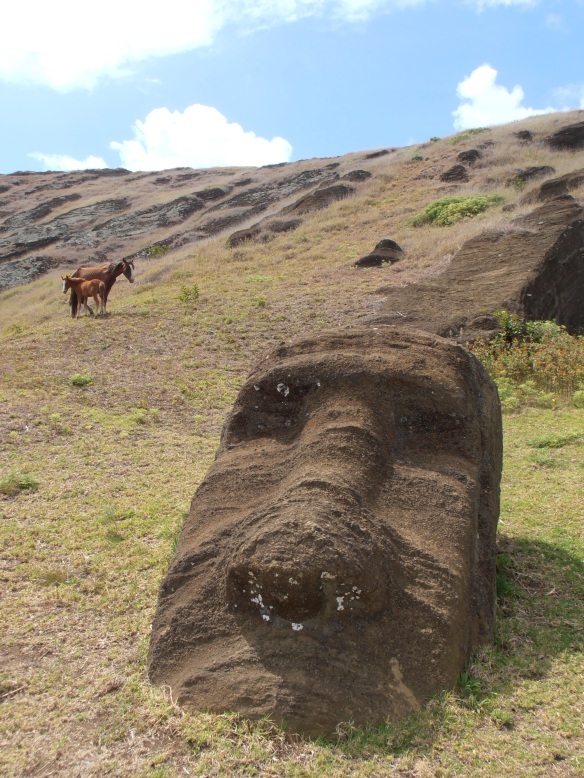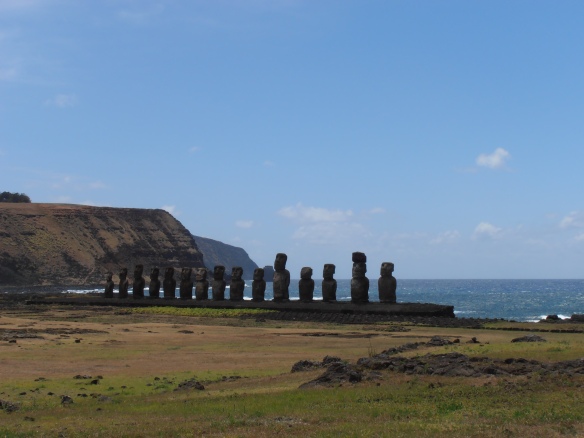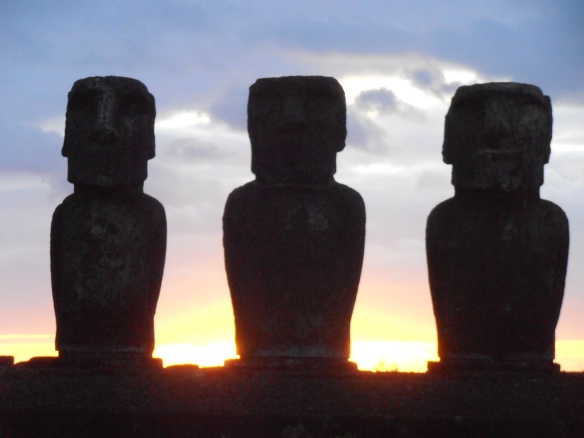Rapa Nui (as it was known to the Polynesians who settled there) is the most remote inhabited island in the world (1,289 miles from the closest inhabited place, Pitcairn Island, and 2,180 miles from mainland Chile). Fortunately, there were about 880 of the island’s stone statues, called ‘Moai’ (pronounced moe-EYE), to keep me company.
The most commonly photographed Moai are those at Rano Raraku, the quarry where the statues were sculpted before being moved to other locations around the island. Although these Moai are well preserved, they are either partially buried or incomplete, leading to the misconception that the sculptures were only heads.
And just to give you some size perspective:
The history of Easter Island is unusual in the sense that the civilization was already in serious decline before the first Europeans arrived. Diminishing resources, mainly due to deforestation, overpopulation and their ripple effects, led to tremendous social upheaval and the population had already declined from 15,000 to a mere 2,000-3,000 during the century before the first explorers. All land birds had become extinct, as well as 21 species of trees. Conflicts between islanders eventually resulted in toppling of the Moai, and by 1868, none were left standing. Many have been restored, but most still remain fallen.
In addition to the Moai, the volcanic craters provide some scenery.
But really, it’s mainly about the Moai:
